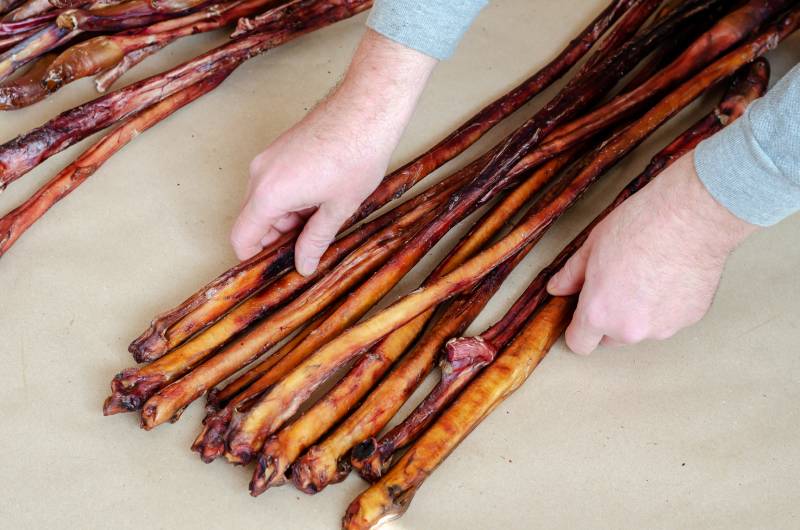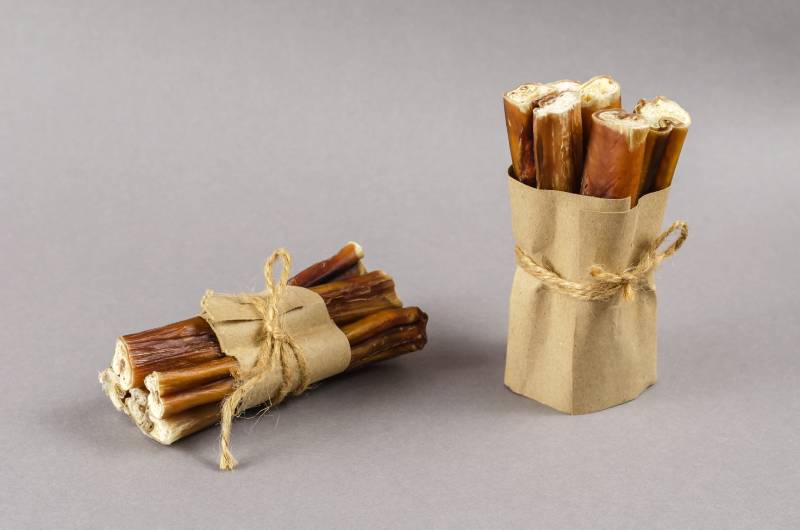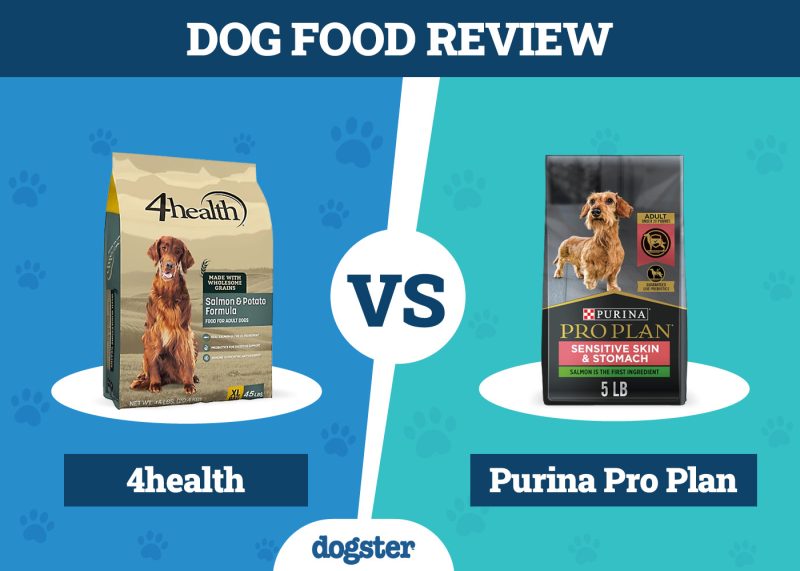In this article
View 2 More +Bully sticks are healthy beef treats that most dogs absolutely love. And yes, they’re technically baked, smoked, or dried bull penises, although it’s also possible to find freeze-dried raw options. Bully sticks are easy to digest and available in various sizes and shapes. Bigger braided options are great for large breeds, and single sticks are just the right size for small pets.
All provide a nice chewy treat that benefits your pet’s dental health. The thick consistency gives dogs a nice surface to bite into, which removes plaque to keep your buddy’s teeth healthy between professional cleanings. And these treats sometimes help lower canine anxiety as chewing often helps dogs soothe themselves.
Bully sticks are considered a safer alternative to bones, and since they’re made of muscle, there is no splintering potential to worry about! This reduces the risk of oral injuries or intestinal perforations commonly associated with bone fragments. Still, dogs should always be supervised while chewing, as large swallowed pieces can cause blockages.
They’re full of amino acids essential for canine skin, brain, coat, and muscle health. If your dog has allergies, bully sticks are a great choice since they only contain a single source of protein. Even puppies can get in on the action as long as they’re old enough to eat solid food.

How are Bully Sticks Made?
These canine favorites are made from bull penises which pet treat manufacturers source from slaughterhouses. Most also purchase cow ears and tails that ultimately end up as dog treats. First, the fat is removed from the penis, and then it’s cut in half to get rid of any remaining blood and urine. The product is washed for several hours, after which it’s hung vertically and either freeze-dried or cooked at a low temperature for days to dehydrate. Some are braided before this step. The resulting products are bully canes, which are then cut to the desired length.
They’re wonderfully healthy snacks but packed full of calories, so make sure to limit your pet’s consumption of them. Treats shouldn’t make up more than 10% of your pet’s diet, or they may end up getting too many calories, resulting in obesity. Anywhere from 25–20% of dogs in the United States are obese, which puts them at risk for developing conditions such as arthritis, cancer, heart disease, and even bladder stones. Dogs that maintain healthy weights tend to live longer than those carrying extra pounds.

How Long Do Bully Sticks Last?
The longevity of bully sticks depends on the size and chewing behavior of your dog! Small dogs may take several days to finish a bully stick, which is fine as long as the chew is stored properly; once exposed to air or saliva, it should be refrigerated between uses to prevent spoilage. Make sure to take the necessary steps to avoid cross-contamination of your food and always wash your hands before and after handling these treats.
Larger dogs often dispense with even super-sized sticks in one or two sittings. Always supervise your pet when they’re enjoying a good chew session since it is possible for your dog to choke if it swallows a large piece. And make sure to get the right size so your dog can get the most out of their chewing experience! When properly packaged and untouched, bully sticks can stay fresh for up to 2 years. Remember to always check expiry dates and to store them in a cool, dry, well-ventilated area away from direct sunlight and moisture, ideally below 77°F.
Are Bully Sticks Safe?
Bully sticks sometimes contain bacteria that can be harmful to you and your pet. Wash your hands well after handling these treats to prevent the transmission of any bacteria. Always purchase bully sticks from a reputable manufacturer that provides clear and transparent sourcing information about their products. Opt for a baked, dried, or irradiated product if bacteria is a specific concern for you, or avoid these treats if you live with anyone with compromised immunity.
You can give gnawed-on snacks a good wipe down with a towel or let them air dry after your pet is done with their daily dose of chewing. Store the treat in an airtight container in the fridge.
Dogs of all ages should always be supervised while playing with any chew toy, including bully sticks. You can buy sticks that are larger than your dog’s mouth to ensure they can’t swallow the treat whole, which can lead to choking or a bowel obstruction.
Take the treat away once it becomes small enough for your pet to ingest or gobble down all at once, and don’t let your dog have access to any small chunks they may manage to bite off. It’s best to limit your dog’s bully stick time to around 10 minutes daily. Since they’re loaded with protein and calories, bully sticks can lead to weight gain if you give your dog too many.


Conclusion
Most dogs love bully sticks. The treats are high in protein and provide essential amino acids that help support your dog’s muscle maintenance, skin, and coat health. They are also a great source of enrichment while helping to mechanically remove some dental plaque and tartar. However, bully sticks are high in calories and should only be provided under supervision. So keep an eye on how much your dog consumes. Try to limit your pet’s treats to around 10% of what they eat to ensure they maintain a healthy weight. Like with other animal ingredients, it’s important to source them from reliable suppliers and hygienically manage and store these treats to avoid contamination and health risks. Proper handling, such as washing your hands after contact, refrigerating chewed pieces, and discarding treats that are too small or show signs of spoilage, helps keep your pet safe.
Featured Image Credit: Dmitriev Mikhail, Shutterstock



















